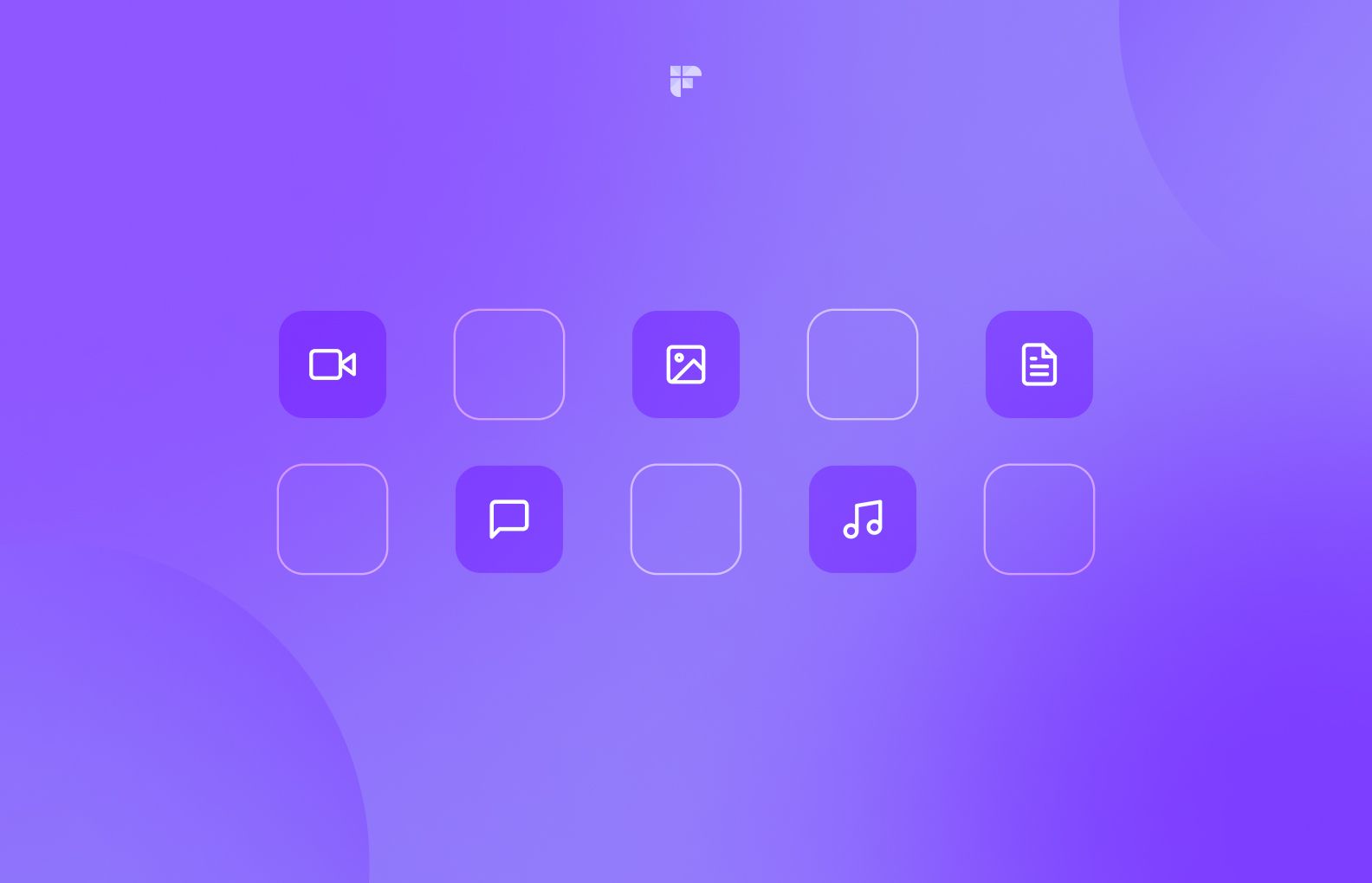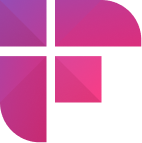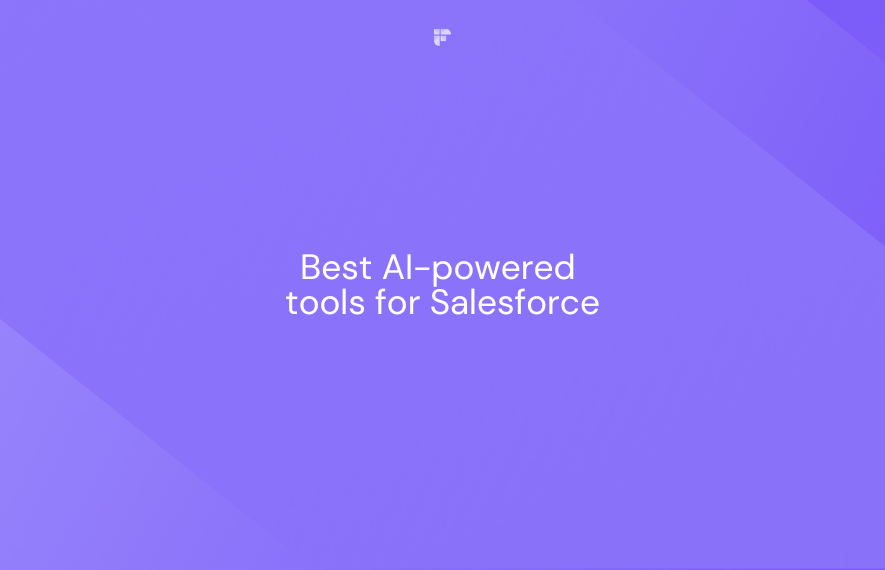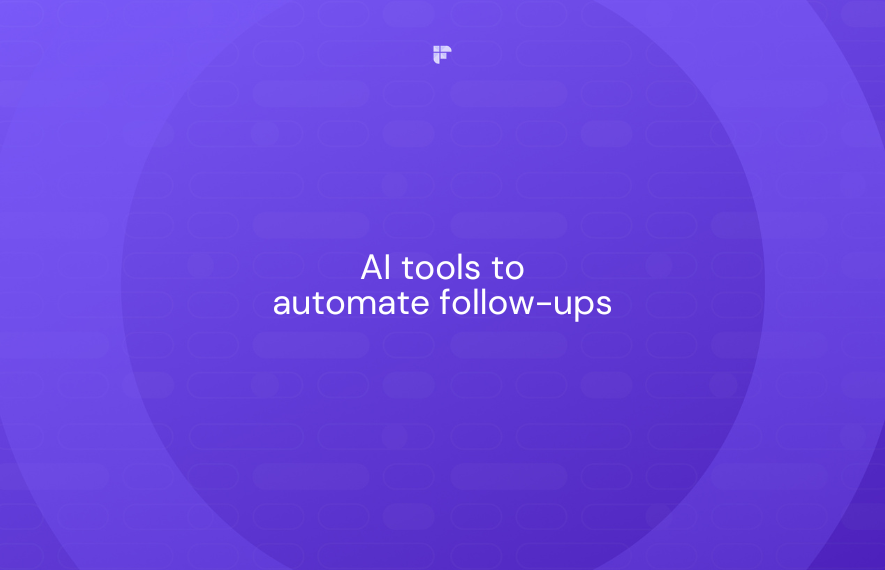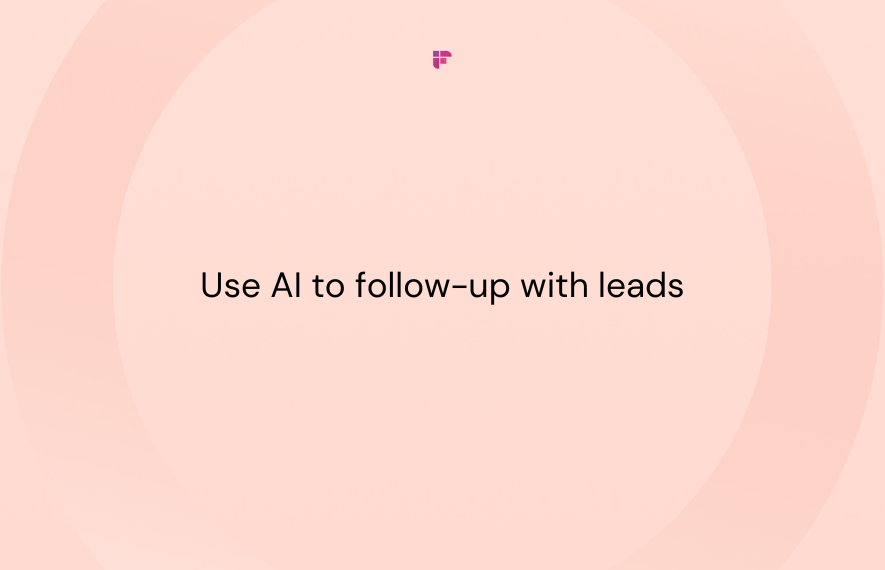
See the image above? That's a generative AI use case.
It's created using Picsart, an app that generates pictures based on written descriptions.
Mind-blowing, isn't it? If you are wondering, "What are some other common use cases of generative AI?" keep reading.
In this blog post, we are going to cover,
- What is Generative AI?
- Why Should You Care About Generative AI?
- Generative AI Use Cases in Different Industries
- What Are Some Common Use Cases for Generative AI?
So, let's begin!
What is generative AI?

Generative AI is artificial intelligence that can create new content, such as images, text, or music, that resembles human-made data.
It works by learning from large datasets and then generating new content based on what it has learned. This technology is used in various fields, from art and entertainment to healthcare and finance, where it can create realistic images, write stories, compose music, or even develop drugs.
Currently, there are two main generative AI models:
- GANs (Generative Adversarial Networks): GANs are great at creating visual and multimedia content from images and text.
- Transformer-Based Models: Transformer-based models, like GPT (Generative Pre-Trained) language models, can take in information from the Internet and generate all sorts of text, from website articles to press releases to whitepapers.
Why should you care about generative AI?

Well, there are so many reasons. Here are the top three:
- One: it can generate brand-new data that doesn't exist yet. Imagine all the endless possibilities for research and testing!
- Two: it can improve existing algorithms by creating training data for new neural networks or evolving top-notch deep learning architectures.
- Three: it's essentially a machine that designs better machines.
But that's not all.
Gartner has declared generative AI as one of the most disruptive and rapidly evolving technologies in their 2022 Emerging Technologies and Trends Impact Radar report.
And get this—they've made some pretty bold predictions about its future impact.
By 2025, generative AI is expected to generate 10% of all data (currently, less than 1%) and 20% of all test data for consumer-facing applications. Plus, it'll be used in 50% of drug discovery and development projects by 2025.
And by 2027, 30% of manufacturers will be using it to improve their product development process.
Generative AI is making waves. So, pretty important stuff, right?
Generative AI use cases in different industries

Here are a few examples of generative AI use cases in different industries:
Logistics and transportation
Generative AI can accurately convert satellite images into map views, enabling the exploration of previously unknown locations. This can be especially useful for logistics and transportation companies looking to navigate new areas.
Travel industry
Generative AI can help with face identification and verification systems at airports. By creating a full-face picture of a passenger from photos taken from different angles, the technology can make it easier to identify and verify travelers' identities.

Healthcare
Generative AI can convert X-rays and CT scans into more realistic images, which can be helpful for diagnosis. For example, by using GANs (Generative Adversarial Networks) to perform sketches-to-photo translation, doctors can get a clearer, more detailed view of the inside of a patient's body. This can be especially useful for catching dangerous diseases like cancer in their early stages.
Marketing
Generative AI can help with client segmentation, predicting the response of a target group to advertisements and marketing campaigns. This can be a valuable tool for companies targeting specific audiences and increasing sales.
You can also synthetically generate outbound marketing messages, enhancing upselling and cross-selling strategies. GPT-4-powered tools like Fireflies AI notetaker let you get personalized notes tailored to your role in sales, marketing, customer service, or any other area.

Simply ask the bot as many questions as you need to get quick answers without having to sift through the entire transcript. And once you've got your notes, you can use them to automatically generate emails, reports, blogs, and scorecards, saving you even more time and effort.

What are some common use cases for Generative AI?
Apart from the industries mentioned above, generative AI has multiple use cases. Here are the top 13 generative AI use cases:
1. Augment data
Use case
One of the most common generative AI use cases is improving data quality by artificially augmenting a data set with additional information similar to the original but not seen before.
This can help improve the performance of deep learning algorithms, which often require large amounts of high-quality data to work effectively.
Business impact
Augmenting data improves deep learning models, enhancing accuracy and robustness without needing more real-world data. This results in better predictions, decision-making, and improved products or services across healthcare, finance, and retail industries.
Technology used
Generative Adversarial Networks (GANs) or Variational Autoencoders (VAEs).
Real-world example
Google's DeepMind uses generative AI to augment medical imaging data for better diagnostics.

2. Design neural network
Use case
Neural networks, a type of artificial intelligence, consist of interconnected nodes called neurons, which are organized in layers and trained to perform specific tasks.
Generative AI can help design neural networks by exploring different configurations and optimizing the connections between neurons to improve performance.
Business impact
Automating neural network design speeds up AI system development for tasks like image recognition, natural language processing, and autonomous vehicles. This cuts time-to-market, streamlines model development, and delivers more efficient AI solutions.
Technology used
Evolutionary Algorithms or Reinforcement Learning.
Real-world example
Tesla uses generative AI to design neural networks for autonomous driving systems.

3. Quantum AI for drug discovery
Use case
Generative AI use cases in healthcare also include using AI models to analyze vast chemical databases. It helps to predict molecular structures and properties. Quantum AI, in particular, accelerates drug discovery by simulating complex quantum interactions.
Business impact
Pharmaceutical firms using quantum AI speed up drug discovery, cutting research time and costs. The faster discovery means new medicines reach the market sooner, meeting medical needs and enhancing patient outcomes.
Technology used
Quantum Machine Learning.
Real-world example
IBM's Quantum Lab applies generative AI to discover new materials for drug delivery systems.

4. Multimodal AI for Creative Content
Use case
Multimodal AI combines text, images, and other data types to generate creative content. For instance, generative AI can create high-quality content for marketing campaigns, including blog posts, social media captions, and email newsletters.
Business impact
This automation helps businesses maintain a consistent online presence, engage with their audience, and drive website traffic.
Technology used
Deep Learning and Natural Language Processing (NLP).
Real-world example
Adobe's Sensei platform uses generative AI for content creation in marketing campaigns.

5. Small language models for customer support
Use case
Small language models (SLMs) can handle customer inquiries, generate responses, and automate routine support tasks. Generative AI powers conversational chatbots that can interact with customers, answer questions, and provide assistance 24/7.
Business impact
These virtual assistants improve customer service, reduce wait times, and lower operational costs for businesses in sectors like banking, insurance, and e-commerce.
Technology used
Transformer-based models like BERT or GPT.
Real-world example
Zendesk employs generative AI for its chatbots to provide customer support.

6. Personalized product recommendations
Use case
Personalized product recommendations use generative AI to analyze customer data (like past purchases, browsing history, and demographics) to offer tailored suggestions.
Business impact
This enhances the shopping experience for customers, increases sales conversion rates, and fosters customer loyalty in the e-commerce and retail industries.
Technology used
Machine learning techniques like collaborative filtering and NLP.
Real-world example
Netflix provides personalized movie recommendations using generative AI, enhancing user satisfaction and subscription retention.


7. Image, music, and video creation/editing
Use case
One of the most common generative AI use cases is media creation. Generative AI tools automate various aspects of image, music, and video creation and editing processes.
These tools can perform tasks such as image enhancement, style transfer, auto-composition of music, and automated video editing, including effects, transitions, and captioning.
Business impact
Automating image, music, and video creation/editing tasks saves time and streamlines production processes.
AI ensures consistency and quality, reduces costs by eliminating manual labor, and fosters creative exploration by suggesting novel variations, benefiting media agencies, advertising firms, and content creators.
Technology used
Convolutional Neural Networks (CNNs), Recurrent Neural Networks (RNNs) and Deep Reinforcement Learning.
Real-world example
Open AI's DALL-E and Stable Diffusion offered automated AI image generation.

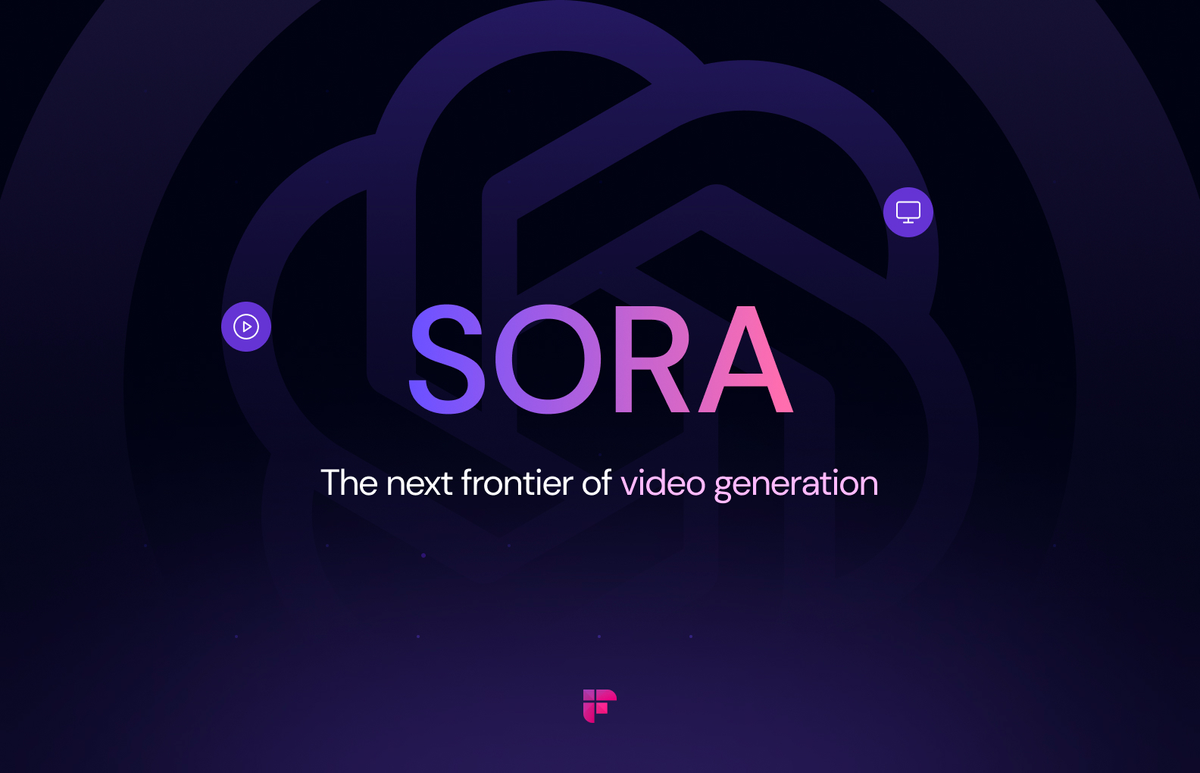
8. Natural language generation for reports and insights
Use case
AI analyzes vast datasets in sectors like finance and healthcare, generating comprehensive reports and insights in natural language.
Business impact
This helps businesses in various sectors, such as finance, healthcare, and market research, quickly make informed decisions based on data-driven insights.
Technology used
Transformer-based models like GPT or BERT.
Real-world example
Bloomberg utilizes generative AI for financial reporting and analysis.

9. Automated code generation
Use case
AI assists in software development by automatically generating code snippets for various applications such as web development, APIs, and machine learning models.
Business impact
This boosts developer productivity, reduces coding errors, and accelerates software development cycles for technology companies.
Technology used
Program Synthesis or Neural Code Generation.
Real-world example
GitHub's Copilot uses generative AI to assist developers in writing code.

10. Generate text-to-speech
Use case
Generative AI use cases also include text-to-speech generation. It uses GANs to create realistic speech audio. The AI is trained to accentuate, tone, and modulate the voice to make it more realistic.
Business impact
It's like your personal robot voice actor and has many practical uses, from education and marketing to podcasting and advertising. It's cost-effective, flexible, and can even speak in multiple languages.
Technology used
Generative Adversarial Networks (GANs).
Real-world example
DeepMind's WaveNet generates lifelike speech for virtual assistants like Google Assistant.

11. Creative question asking
Use case
CQA (Creative Question Asking) is about generating thought-provoking questions to stimulate your mind. AI generates these questions to stimulate discussions and enhance engagement in various contexts, such as meetings and brainstorming sessions.
Business impact
Generative AI-driven creative questioning prompts new perspectives, fosters innovation, encourages participation, and eases the burden of generating follow-up questions in meetings.
So next time you're struggling to create a good follow-up question in that Zoom meeting, let generative AI do the heavy lifting.
Technology used
Natural Language Generation (NLG).
Real-world example
Slack employs generative AI to create engaging icebreaker questions in team channels.


12. Predictive maintenance in manufacturing
Use case
Generative AI analyzes sensor data from manufacturing equipment to predict maintenance needs and prevent failures.
Business impact
This minimizes downtime, optimizes production schedules, and reduces maintenance costs for manufacturing companies.
Technology used
Machine Learning and Time Series Analysis.
Real-world example
Siemens utilizes generative AI for predictive maintenance in its manufacturing facilities.

13. Automated game development
Use case
Generative AI algorithms can create game levels, characters, and environments based on predefined parameters and player preferences.
Business impact
This streamlines game development processes for gaming studios, enabling them to produce high-quality games more rapidly and cost-effectively.
Technology used
Procedural Content Generation (PCG).
Real-world example
Ubisoft employs generative AI to generate game worlds in titles like Assassin's Creed.

Related: 10 Fun Microsoft Teams Games for Virtual Team Building
Fireflies - Generative AI for Online Meetings

In addition to helping with content creation, personalization, and software development, generative AI also helps improve the efficiency of online and offline meetings.
Want to know how? Start using Fireflies!
Fireflies.ai is an innovative tool revolutionizing meeting productivity and collaboration through generative AI. It helps you to record, transcribe, summarize, and analyze meetings automatically.
This streamlines post-meeting workflows, ensuring critical information is captured and utilized effectively.
Related: 10 Best AI Transcription Tools to Boost Productivity
Key features and capabilities
- Fireflies transcribes, summarizes, and analyzes voice conversations.
- It captures video and audio, providing paraphrased meeting summaries.
- Achieves 95%+ accuracy in transcriptions for 100+ languages.
- Users can review 1-hour meetings in just 5 minutes.
- Offers one-click access to action items, tasks, and key metrics.
- Allows filtering and listening to key topics discussed in meetings.
- Enables adding comments, pins, and reactions to specific conversation parts.
- Facilitates creating soundbites for easy sharing of memorable moments.
- Tracks speaker talk time, sentiment, and other key metrics for coaching.
- Instantly shares meeting recaps to collaboration apps like Slack, Notion, and Google Docs.
- Automatically creates tasks in Asana, Trello, and Monday.com using voice commands.
- Organizes meeting recaps in different channels for quick information retrieval.
- Utilizes AI assistant AskFred to extract information and answer questions about meetings.
- Uses AI to write blogs and generate content.
- Generates quotes from meetings.
- Uses meeting summaries to craft emails and reports.
- Provides 256-bit AES and SSL/TLS encryption for security.
- Integrates with various platforms including Google Meet, Zoom, and Microsoft Teams.

💡 Make Your Meetings More Productive With Fireflies
Transform your meetings with Fireflies' generative AI - record, transcribe, summarize, and revolutionize productivity.
Wrap up
So, these are the top 13 generative AI use cases. It is a compelling and rapidly evolving technology that is revolutionizing several industries and changing how we work.
Whether creating new video games, generating text and images, or improving online meetings, generative AI already has a significant impact, and there's no telling what it will do next.

